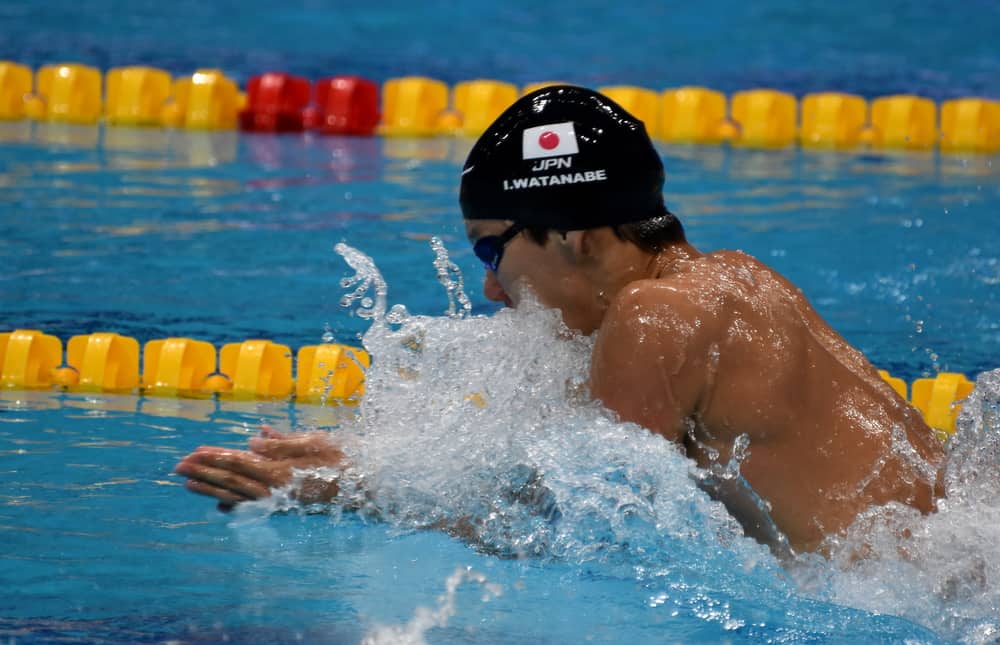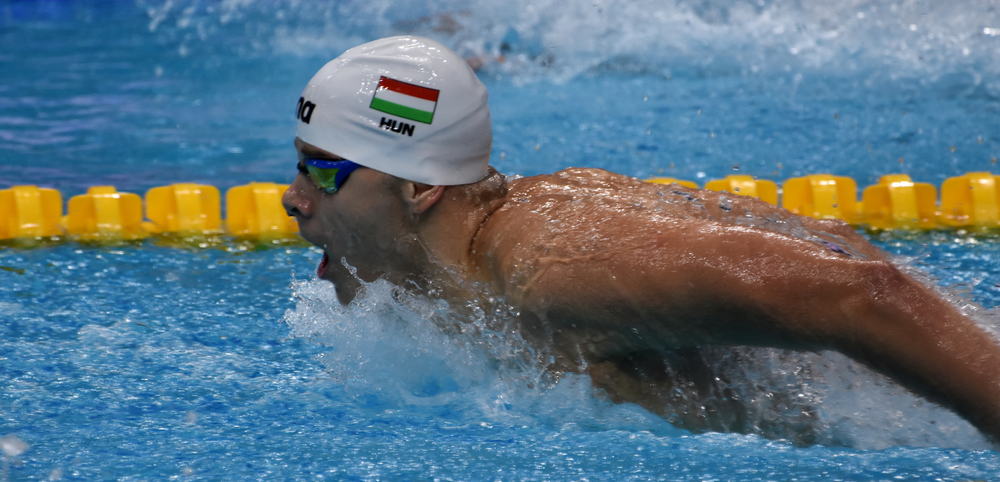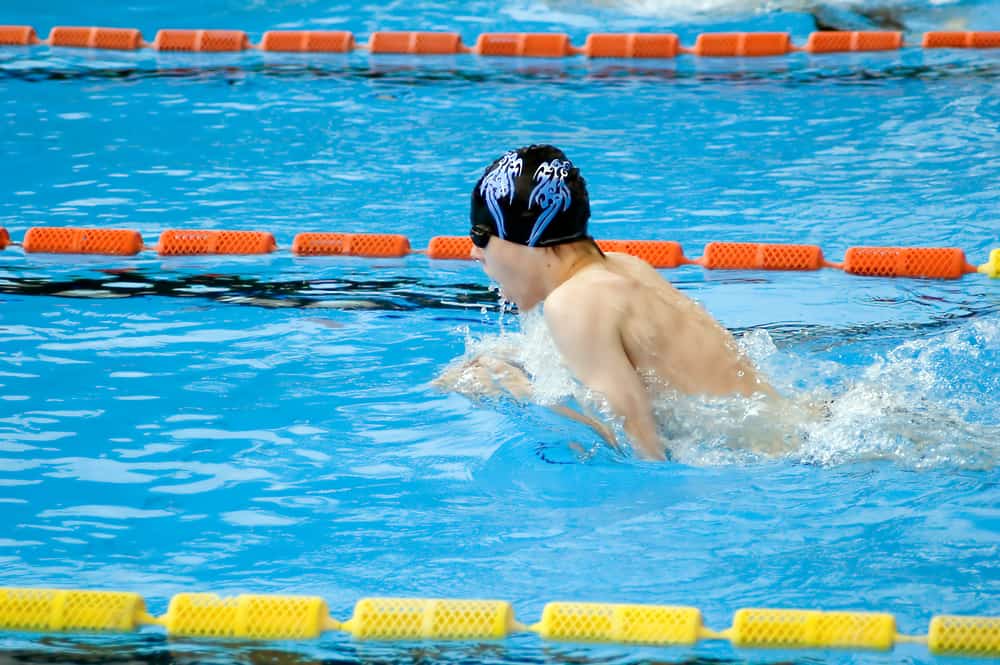The image shows a swimmer with the correct arm action for breaststroke. You can see that the arms are moving in a circular motion and are close to the body—this is the ideal way to swim breaststroke to maximize efficiency and avoid injury.
When swimming breaststroke, it is essential to use a smooth, circular arm motion. This will help you propel yourself through the water while keeping your arms close to your body. Be sure to tuck your chin to ensure a smooth swimming stroke. Swimming with incorrect arm action can lead to inefficient swimming and pulled muscles.

Table of Contents
How to Do the Correct Arm Action for Breaststroke
When swimming breaststroke, your arms should move in a circular motion. This motion will help you propel yourself through the water. Keep your arms close to your body and tuck your chin to ensure a smooth swimming motion.
To do breaststroke correctly, you should
- Keep your arms close to your body as you swim
- Move your arms in a circular motion
- Tuck your chin to maintain a good body position
The Benefits of Doing the Correct Arm Action for Breaststroke

Swimming with proper technique is essential for all strokes, but it is necessary for breaststroke. You can move through the water more quickly and efficiently with the correct arm action. This will allow you to swim faster and longer.
Additionally, doing the correct arm action will help to strengthen your arms, shoulders, and back muscles. Swimming with proper form is a great way to improve your overall swimming performance.
There are many benefits to doing the correct arm action for breaststroke. Those who train to swim correctly can traverse the water with much less effort and incredible speed.
They will also build muscle in their back, shoulders, and arms. Correct swimming is a terrific method to speed up your progress in the pool. Proper arm motion is essential for increased speed and endurance in swimming. Consider how much of an improvement in the pool this could be.
What Can Go Wrong If You Don’t Do the Correct Arm Action for Breaststroke
There are a variety of issues that can arise if you don’t use the proper arm motion when swimming the breaststroke. Swimming with the improper technique will make you less efficient and move slowly through the water.

Additionally, you will not be as strong as you could be and may experience pain in your arms, shoulders, and back. Swimming with proper form is key to swimming well and avoiding potential injuries.
Poor technique is one of the most common problems associated with incorrect arm action for breaststroke. Poor practice makes swimming less efficient and slower. You will also tire more efficiently, leading to frustration and a loss of motivation. Additionally, incorrect arm action can cause pain in your arms, shoulders, and back.
Swimming with proper form is key to avoiding these problems and swimming effectively. Failure to execute the appropriate arm action for breaststroke might also reduce your strength. This is because the improper technique uses different muscles than those used when swimming with proper technique.
As a result, you will not be able to develop the same level of strength and power. This can cause one to become discouraged and give up. Additionally, it can make it more difficult to swim with proper technique, as you will not have the strength to do so. Swimming with appropriate form is key to developing the strength and power you need to swim effectively.
Finally, incorrect arm action for breaststroke can also cause injuries. This is because improper technique puts unnecessary stress on your body. Additionally, if you are not as strong as you could be, you are more likely to experience injuries.
How to Make Sure You’re Doing the Correct Arm Action for Breaststroke
The arm action for breaststroke is essential, as it provides the power for you to move through the water. If you are not doing it correctly, you will be less efficient and move more slowly. Additionally, you may experience pain in your arms, shoulders, and back.

Here are some tips to make sure you are doing the arm action correctly
- Keep your arms parallel to each other and pointed downward.
- Keep your hands close to your body and keep your fingers close together.
- Use a gentle circular motion with your arms to move through the water.
- Don’t extend your arms too far out in front of you.
- Make sure that your elbows stay close to your body at all times.
- Relax your shoulders and keep them down at your sides.
- Use a slow and steady motion when swimming with breaststroke arm action.
Why Is the Circular Arm Action Important for Breaststroke?
The circular arm action is one of the essential aspects of breaststroke. When done correctly, this arm action will help you move through the water more efficiently and with less drag.

It will also help you generate more power and speed, allowing you to swim faster. Furthermore, by using your arms in this manner, you will be able to keep your body in the correct position and prevent unnecessary rotation.
While other strokes rely on a linear motion through the water, breaststroke uses a unique circular motion. This is because your arms move in a semicircular pattern from entering the water until they exit. While this may seem slightly different, it significantly impacts your swimming efficiency.
The circular arm helps you move through the water with less drag when done correctly. The circular motion creates a small vortex of water behind your components. This vortex reduces the resistance your arms have to push against, making it easier for you to move through the water.
Additionally, this arm action helps you generate more power and speed. This is because the circular motion allows you to use your shoulder and lat muscles more effectively. These muscles are some of the strongest in your body, so using them more effectively will help you swim faster.
Finally, the circular arm helps you maintain proper body position and avoid rotating too much. Turning your body too much can cause you to lose balance and slow down. By keeping your arms close to your body and using a circular motion, you can help keep your body stable and swim faster.
